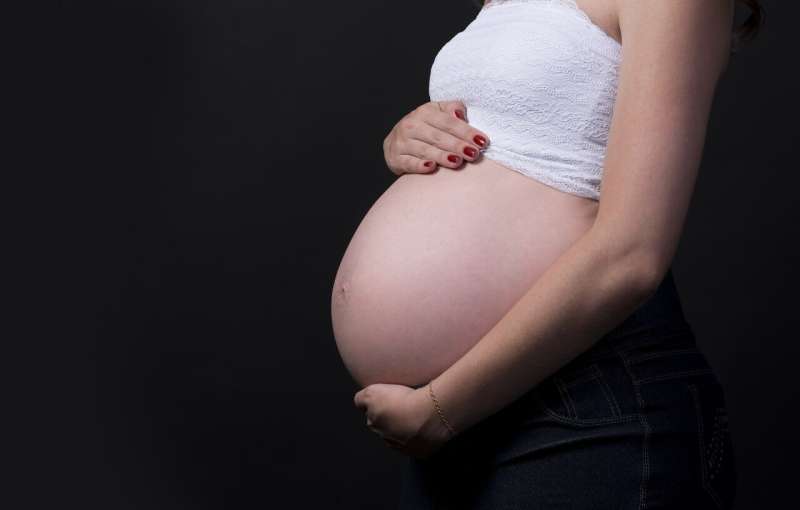This article has been reviewed according to Science X's editorial process and policies. Editors have highlighted the following attributes while ensuring the content's credibility:
fact-checked
trusted source
written by researcher(s)
proofread
Training for two: Olympians are challenging gender norms by competing while pregnant

Egyptian fencer Nada Hafez revealed she was seven months pregnant in an Instagram post after competing in the women's individual saber competition at the Paris Olympics. "What appears to you as two players on the podium, they were actually three! It was me, my competitor, and my yet-to-come to our world, little baby!"
Hafez defeated American Elizabeth Tartakovsky in the first round of the competition before losing to Jeon Hayoung of the Republic of Korea, which eliminated her from the competition. Hafez finished ranked 16th, achieving her best result in three Olympic appearances.
A day later, Azerbaijani archer Yaylagul Ramazanova also revealed on Instagram that she was six-and-a-half months pregnant while competing. Women athletes in various stages of pregnancy have continually challenged the perception of what a woman can do while pregnant.
In 2017, for instance, Alysia Montaño competed in the U.S. Track and Field Championships at eight months pregnant, beating her previous time set during her 2014 pregnancy. And in 2012, Nur Suryani Mohamed Taibi, the first woman to participate in an Olympics for the country of Malaysia, competed in the Olympics in shooting while eight months pregnant.
Increasing numbers of elite athletes are competing while pregnant and returning to competition afterwards, demonstrating that pregnancy and high-level athletic performance can coexist.
The Paris Olympics have highlighted the achievements of not only women, but also mothers, with 16 American mother-athletes alone competing in various events.
The success of many mother-athletes, such as New Zealanders Lucy Spoors and Brooke Francis who rowed together to win gold in double sculls, have shown it's feasible to train safely during, and return to sport successfully after pregnancy.
The establishment of a nursery by Allyson Felix, a member of the International Olympic Committee Athlete's Commission, has created a space where motherhood and elite sport participation can co-exist.
We are starting to gain more information regarding elite sport and motherhood, and there is emerging evidence on training for elite sport participation during pregnancy. However, there is much room for improvement.
Physical activity during pregnancy
The World Health Organization recommendations for physical activity suggest that all pregnant women, without contraindication, should meet 150 minutes of moderate-physical activity per week.
Furthermore, the Canadian Guideline document for physical activity during pregnancy has recommended that physical activity be accumulated over a minimum of three days per week, and should incorporate a variety of aerobic and resistance exercises.
Physical activity during pregnancy can lead to a multitude of health benefits for both mother and baby, such as decreased risk of pre-eclampsia, gestational diabetes, hypertension, excessive gestational weight gain, postpartum depression and newborn complications. Regular physical activity has no adverse effects on birth weight or doesn't increase the risk of stillborn birth.
Training during pregnancy
In 2016, the IOC assembled an international expert committee and published a set of recommendations for training during pregnancy for recreational and elite-level athletes.
These guidelines advise that, barring contraindications like pre-eclampsia or hypertension, women can safely continue with their regular aerobic activity while monitoring for important symptoms—like vaginal bleeding or frequent contractions—that would signal the need to modify or stop the activity and seek medical advice.
The guidelines recommend a maximum intensity of equal to or greater than 90% of the maximum rate of oxygen consumption during exercise (also termed VO2 max). However, there has not been much research on athletes whose baseline VO2 max is already significantly higher than the general population.
Elite athletes have reported uncertainty about training through pregnancy. They exercise well above the 150 minutes per week, often at a vigorous intensity, causing some to question the relevance of these recommendations to them.
For instance, a study conducted on 42 elite-level runners during pregnancy found that while their training volume decreased from the first to the third trimester, it was still two to four times higher than current guidelines.
Another study demonstrated that high-intensity interval training, which takes place at above 90% of maximum heart rate, was well tolerated by both medically screened mothers and fetuses for acute sessions and short periods of time.
More research is needed to provide better guidance on exercise frequency, intensity and duration for pregnant athletes, as the current guidelines may be relatively conservative for elite athletes.
Other considerations
Over the past few Olympic Games, mother-athlete advocates have highlighted the difficult decisions athletes feel they must make when training during pregnancy.
For example, some athletes struggle with the societal pressure to choose between becoming pregnant or being an athlete—a choice male athletes almost never have to make. Athletes also expressed concerns around pregnancy planning, fertility, pregnancy disclosure, discrimination, safety while training and funding support.
A follow-up study conducted with coaches and health-care professionals working with pregnant and postpartum athletes revealed similar themes. This included a lack of female-athlete reproductive research, a need for evidence-informed education and training, open communication to support athlete-centered care, and better essential supports and policy changes to support pregnant or postpartum athletes.
With the right supports in place, athletes can continue to train during pregnancy with medical support, and excel after birth. However, as with pregnancy and postpartum care, there is still work to be done to improve athlete care and support.
We need more high-quality evidence to inform evidence-based guidelines for elite sport participation and training through pregnancy and return to sport postpartum, with improved sport policy. This will, in turn, promote longevity in sport.
This article is republished from The Conversation under a Creative Commons license. Read the original article.![]()




















